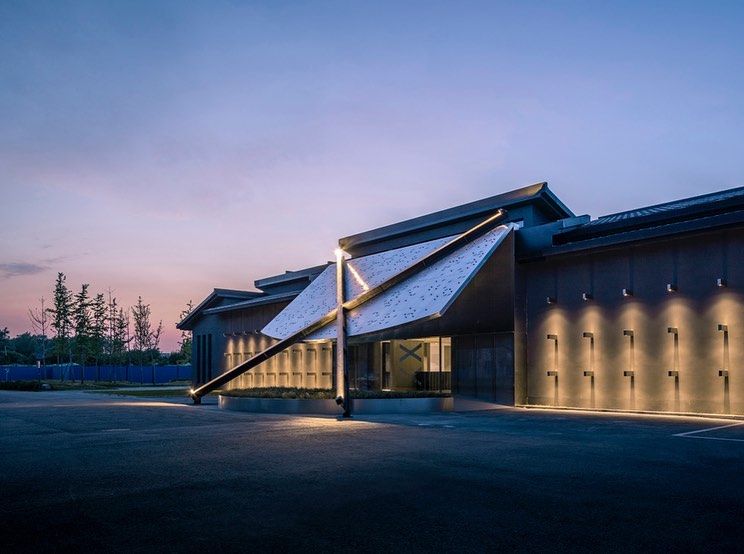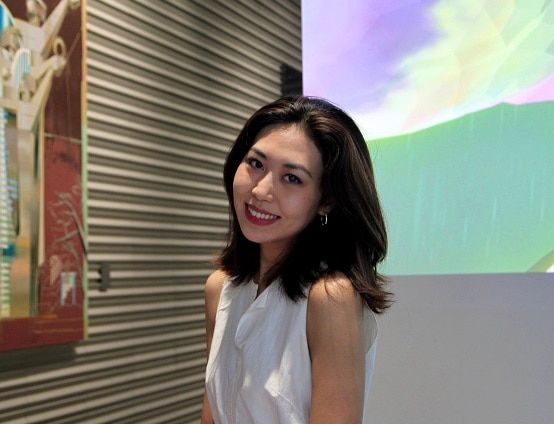VR will offer artists new ways to create
Technology and art are set to become ‘inseparable’, according to Poppy Dongxue Wu, the curator of Beijing’s innovative new X Museum
Founded by young collectors Michael Xufu Huang and Theresa Tse, X Museum opened in May 2020 to provide a platform for emerging artists from China and across the world. Based in Beijing, the X Museum is complemented by a digital platform, X Virtual Museum. We spoke to Poppy Dongxue Wu, the chief curator of the museum and curator of its inaugural exhibition ‘X Museum Triennial – How Do We Begin?’, which incorporates a new virtual reality work by artist Cheng Ran.
What is the ambition of the X Museum?
X Museum aims to introduce and present both emerging Chinese and international artists. Our projects and programmes often address the ‘emerging’ and ‘millennial’, a decision reflecting their urgency as well as their absence from the wider ecology of Chinese contemporary art.
Poppy Dongxue Wu, curator of ‘X Museum Triennial – How Do We Begin?’ Photo by Haley Liu
Given the transdisciplinary nature of contemporary art and curation, future programmes will incorporate fields including fashion, architecture, music, and astronomy. Multiplicity is important to us: we want X Museum to be a place where young, under-represented artists can exercise their ideas as freely and openly as possible.
Can you introduce the museum’s inaugural exhibition ‘X Museum Triennial - How Do We Begin’
The exhibition is the first of a triennial, and coincides with the centennial of the birth of the first real-time mass media (the first commercial radio station, KDKA, aired in 1920 in Pennsylvania). Its starting point are the ideas of ‘live’, ‘liveness’ and ‘sensing together’ (synaisthanomenoi, or the Greek for ‘concurrent perception’). Its launch comes at the beginning of a new decade—a decade which once existed only in science fiction.

This inaugural edition examines how technology is impacting modes of production, exploring the theme through multiple viewpoints and disciplines. It speculates about what lies ahead of us and how we might form relationships with new media and technology in the 2020s.
More broadly, I envision the triennial becoming a sustainable, open space, where all forms of creative and cultural practice can take place and intermingle, without boundaries between specific disciplines.
The triennial includes a public programme, which runs throughout the year and includes live performances, DJ sets, talks and community-based practice, and video/virtual reality games. I hope the project sparks the production of fresh, unexpected content for the public in Beijing.
How do you think the relationship between technology and art will develop in the 2020s?
I think they are inseparable from each other. First and foremost, I anticipate that the basic mediums and materials artists have used, such as pigment and paper, will be largely replaced by digital mediums and screens. For artists, this transition might not be conscious, but it will become prominent, because it will infiltrate every process involved in making art.
‘It is both challenging and exciting for me to discover and set up virtual ‘stimulations and sensations’ in VR’
The unique contexts that new media facilitates (for example, the pictorial space of Instagram, or the immersive virtual space of VR) will offer artists fresh opportunities. VR is a powerful medium for communication, and will offer artists new perspectives and ways to create. This transition will require new thinking around our current relationships with presenting, watching and being watched.
Why was it important for you to include virtual reality in the exhibition?
Partly because of my background in architecture; I see VR as a generator for virtual spaces. It can present us with a world that is unattainable in real life—like rendering a dream. I guess that’s very much the same idea artists have when they work with VR.
We also wanted to be timely and introduce this new medium to our audiences, as well as explore how it shapes the way artists work today. For example, Cheng Ran’s new virtual reality work, ‘Always I Distrust’ depicts a meditative, virtual world that is ‘built’ by spam email receivers.
How do you view the relationship between the physical museum space and digital platforms?
Each is equally important and unique, and supports distinct types of artistic and curatorial practice. The X Virtual Museum, for example, is not just an online replication of our physical museum or a means of documenting and archiving its exhibitions and events — instead, it is an extension of the space and its programmes.

The X Virtual Museum and X Museum are intentionally different, providing two distinct contexts in which to explore forms of artistic production. This non-equivalency highlights the unique and irreplaceable nature of each: the X Museum presents physical experiences, which directly stimulate the five senses, whereas the X Virtual Museum offers a game-like, treasure hunt experience, whose many "components" are extracted from the physical museum’s architecture and structure.
How are new technologies such as VR impacting the way you work as a curator?
VR should be seen as a practice and strategy. Context is at the centre of my curatorial practice, and I spend a lot of time thinking intuitively about how audiences will perceive each work and the exhibition as a whole. Physical space can stimulate the senses through scale, lighting, humidity. It is both challenging and exciting for me to discover and set up virtual ‘stimulations and sensations’ in VR.
Always I Distrust is the first VR artwork by the celebrated video and cross-media artist Cheng Ran, which explores the emotional isolation of city dwellers. Read more here

